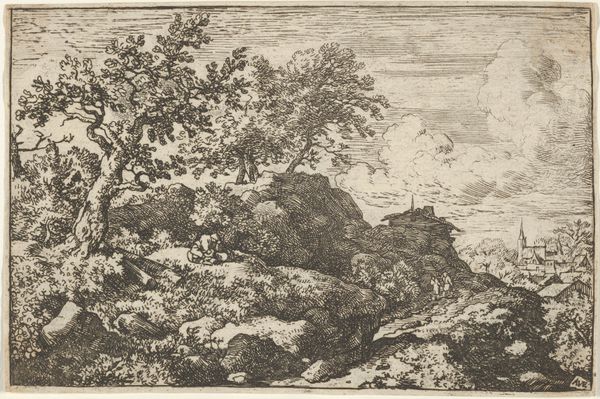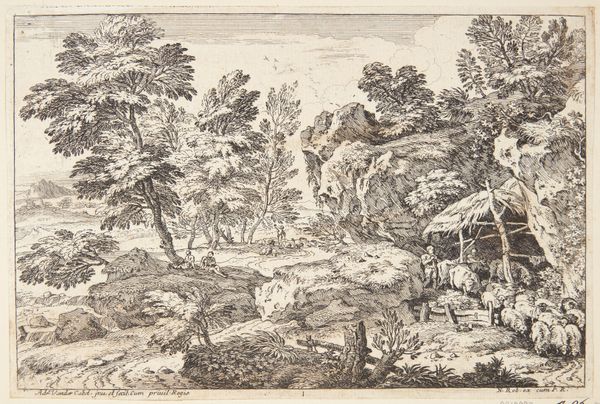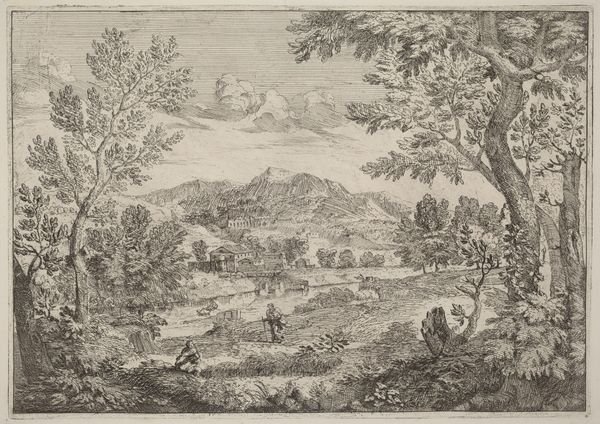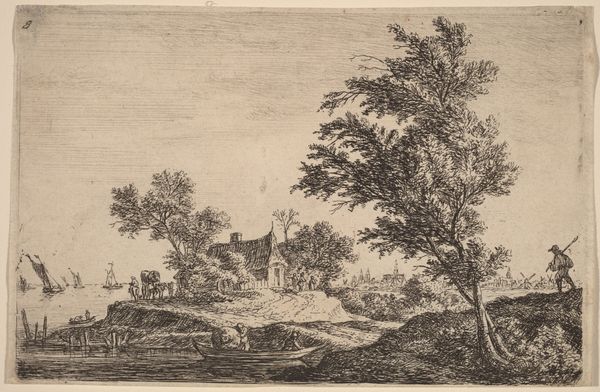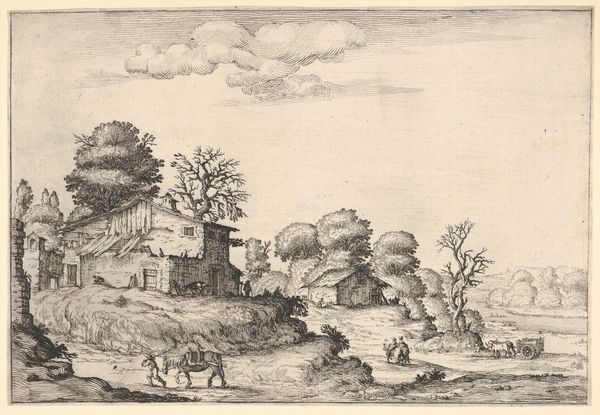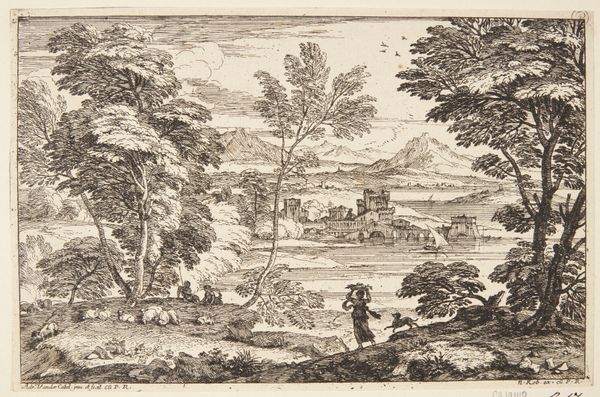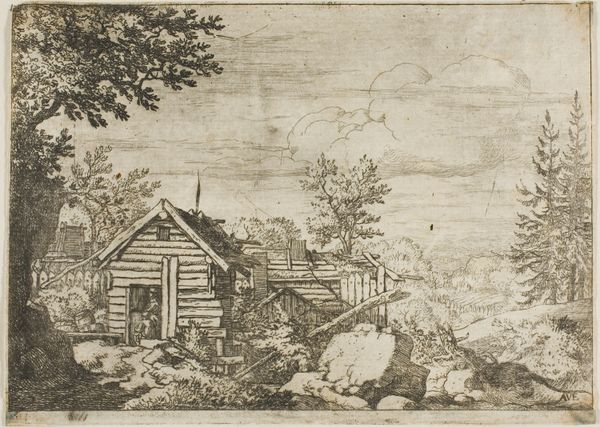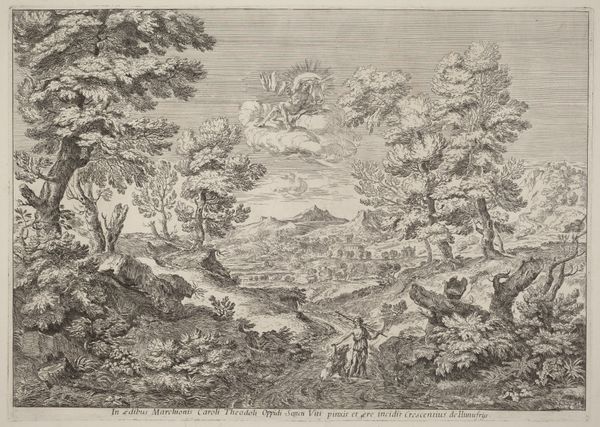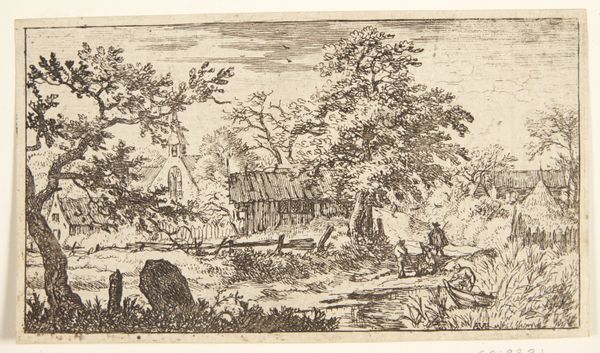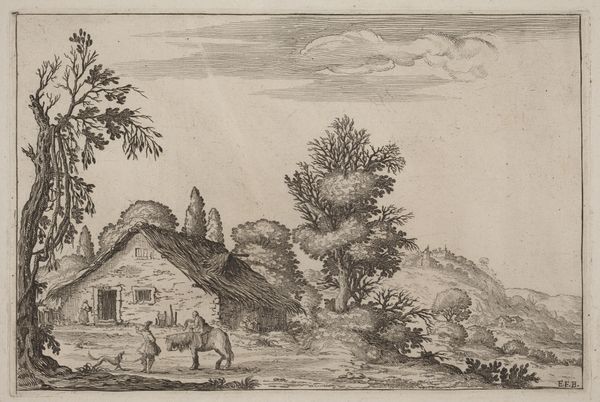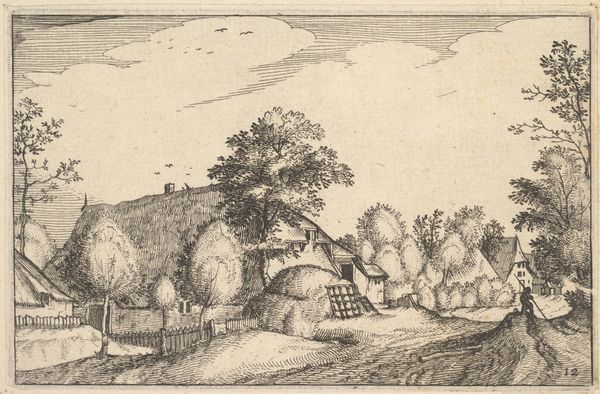
print, etching
#
baroque
#
dutch-golden-age
# print
#
etching
#
landscape
#
etching
Copyright: National Gallery of Art: CC0 1.0
Allart van Everdingen made this etching, Three Goats at the River, sometime in the 17th century. An etching like this begins with a metal plate, likely copper, coated with a waxy, acid-resistant ground. The artist then scratches an image into the ground, exposing the metal. When the plate is dipped in acid, the exposed lines are eaten away, creating grooves. These grooves hold ink, which is then transferred to paper under high pressure, resulting in a print. Look closely, and you'll notice the rich details achieved through the etched lines. Van Everdingen skillfully uses hatching and cross-hatching to build up tone and texture, capturing the roughness of the landscape. Etchings like this one were relatively inexpensive to produce. Their existence speaks volumes about the growing market for art among the middle classes during the Dutch Golden Age. They offered ordinary people the chance to own a piece of art. By understanding the materials and making of the print, we can appreciate its wider social significance.
Comments
No comments
Be the first to comment and join the conversation on the ultimate creative platform.
